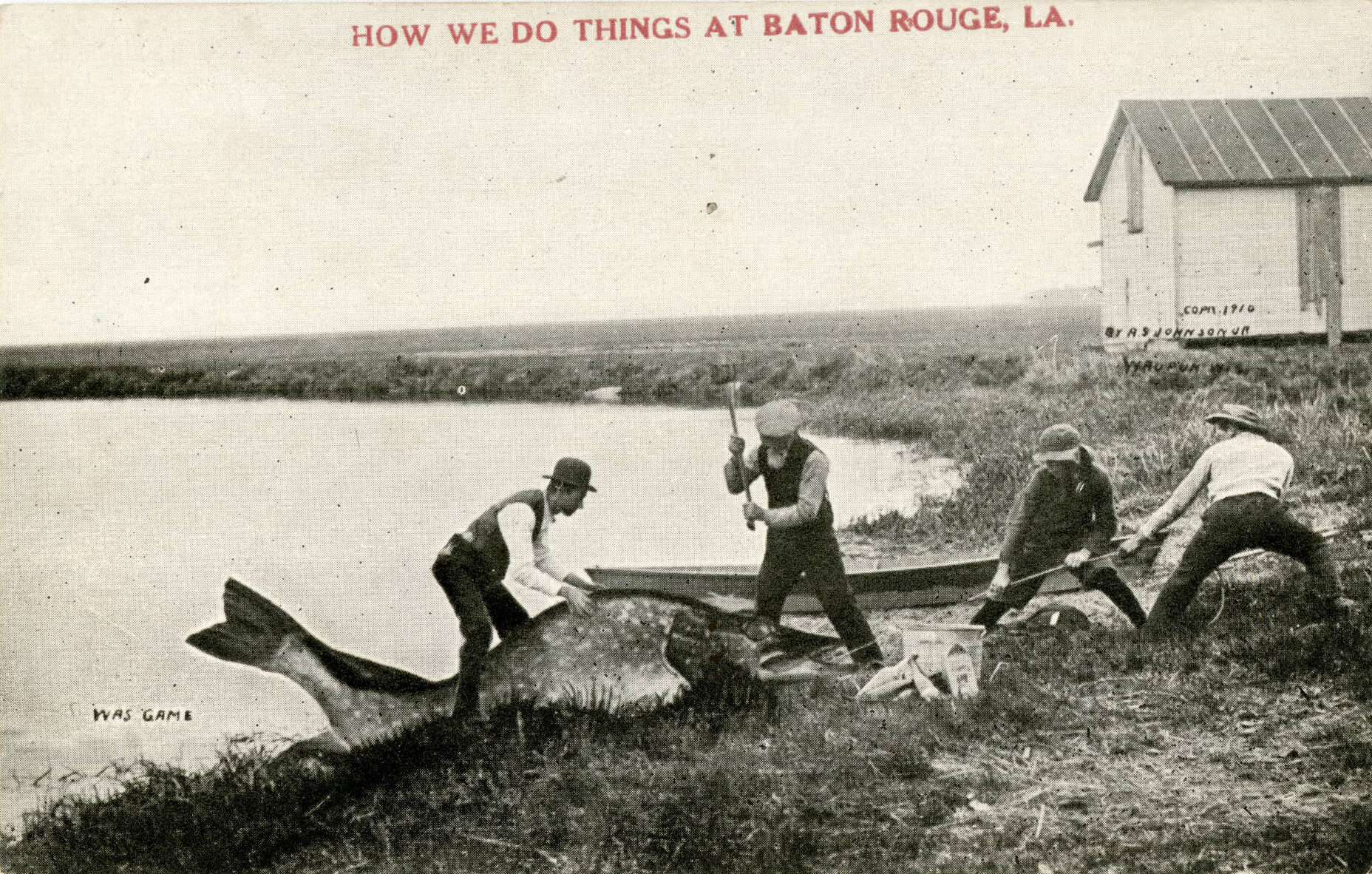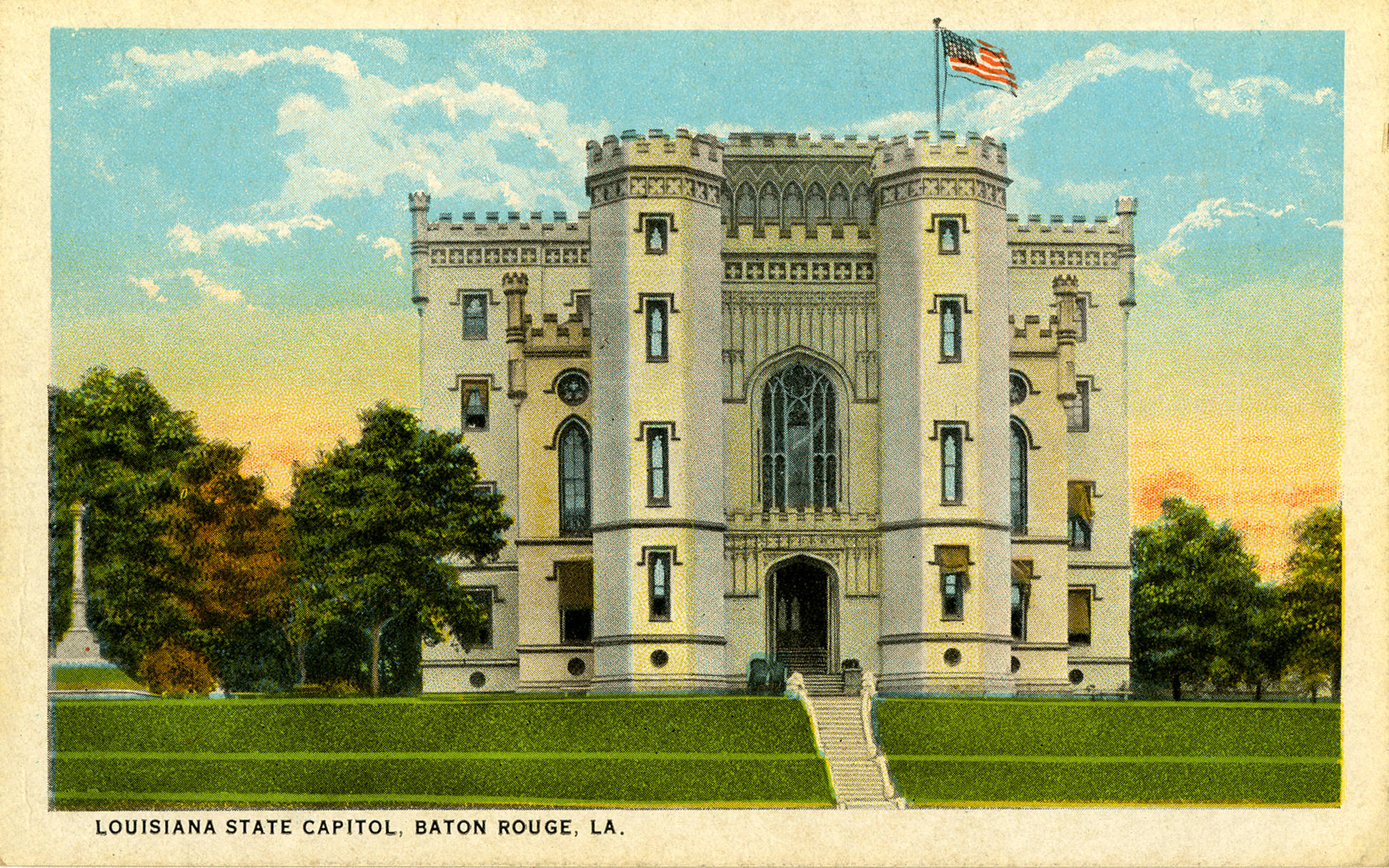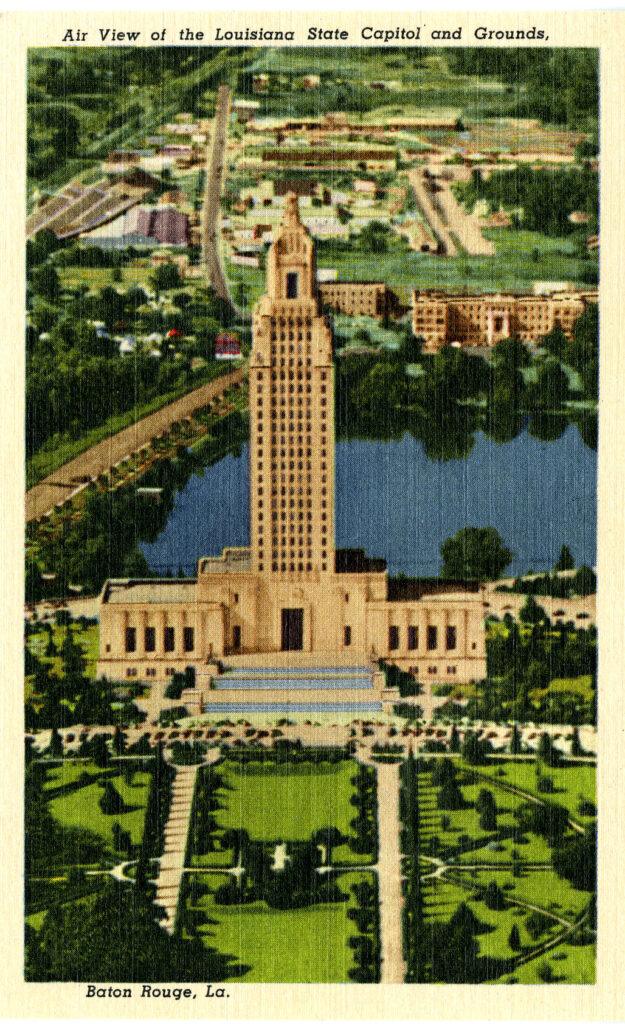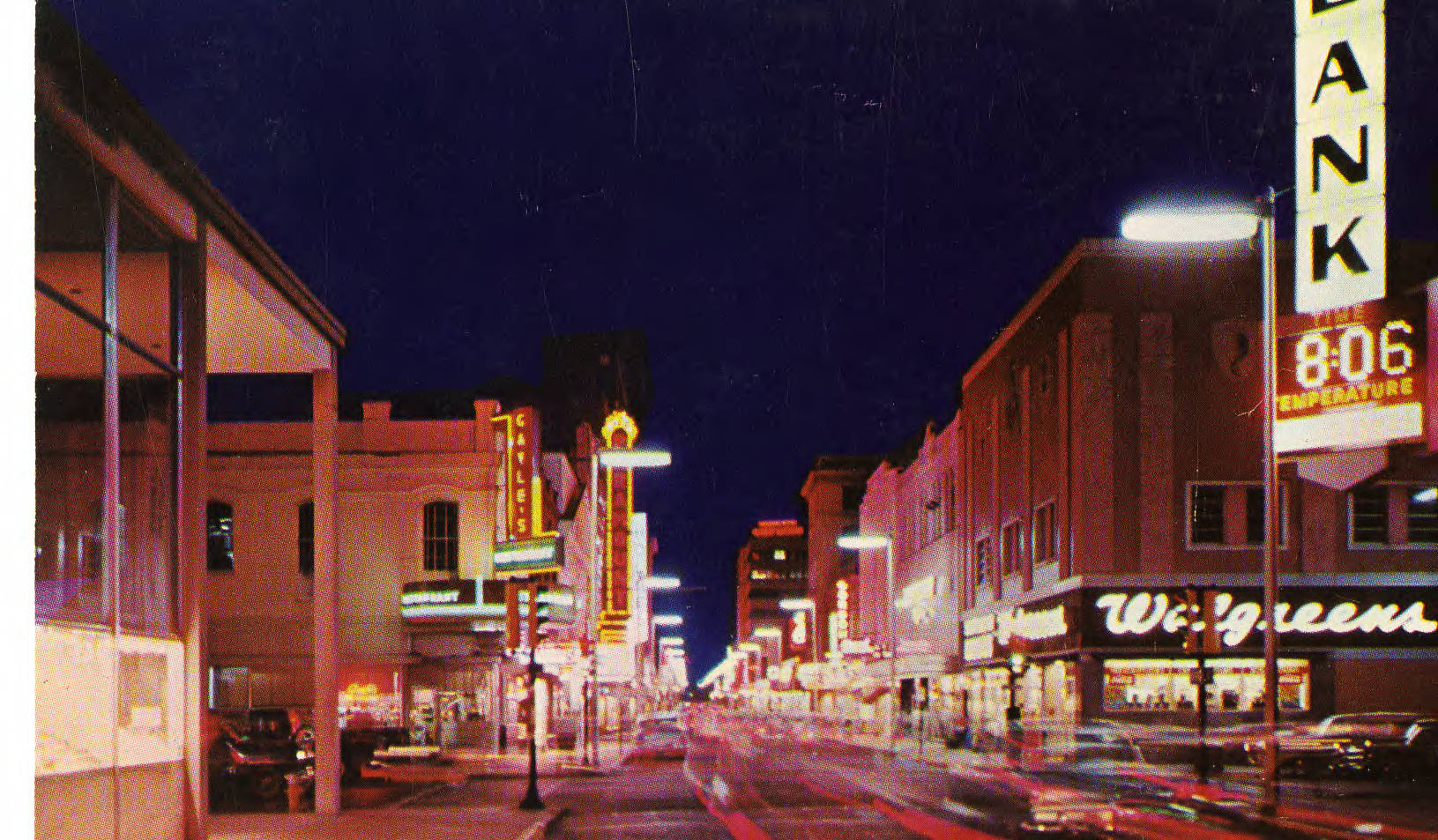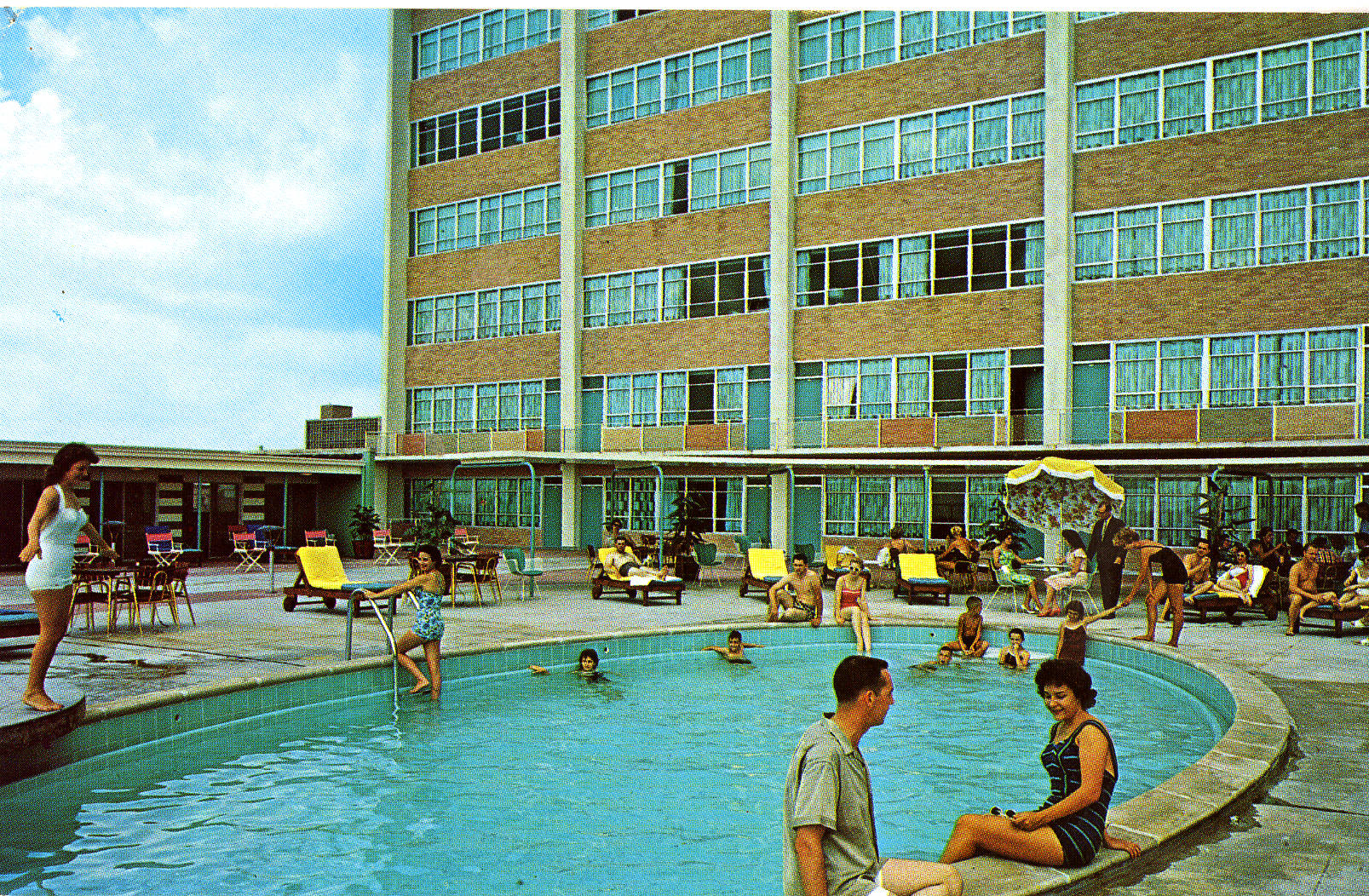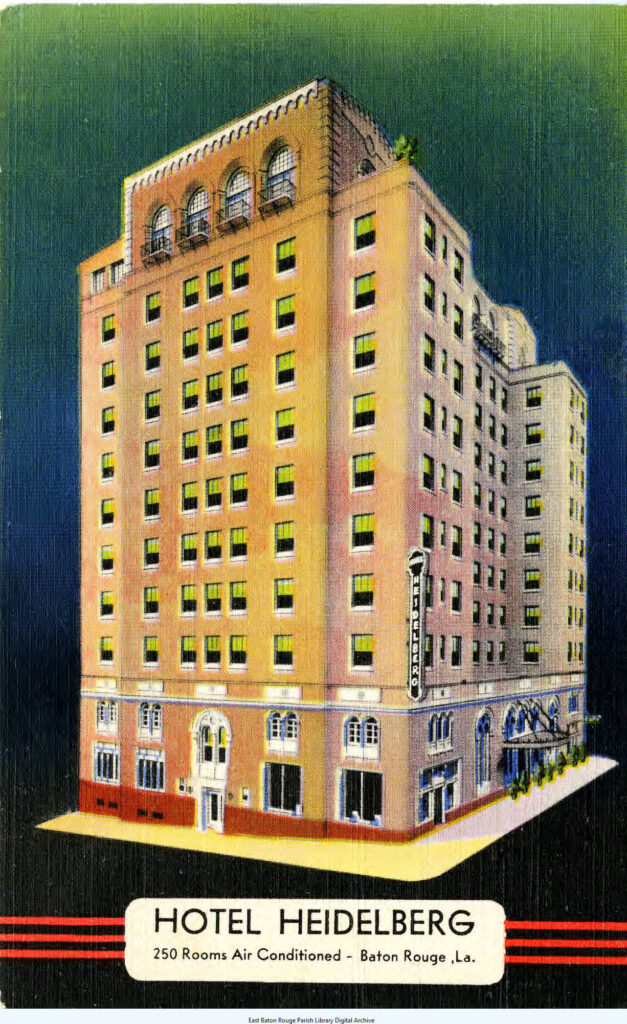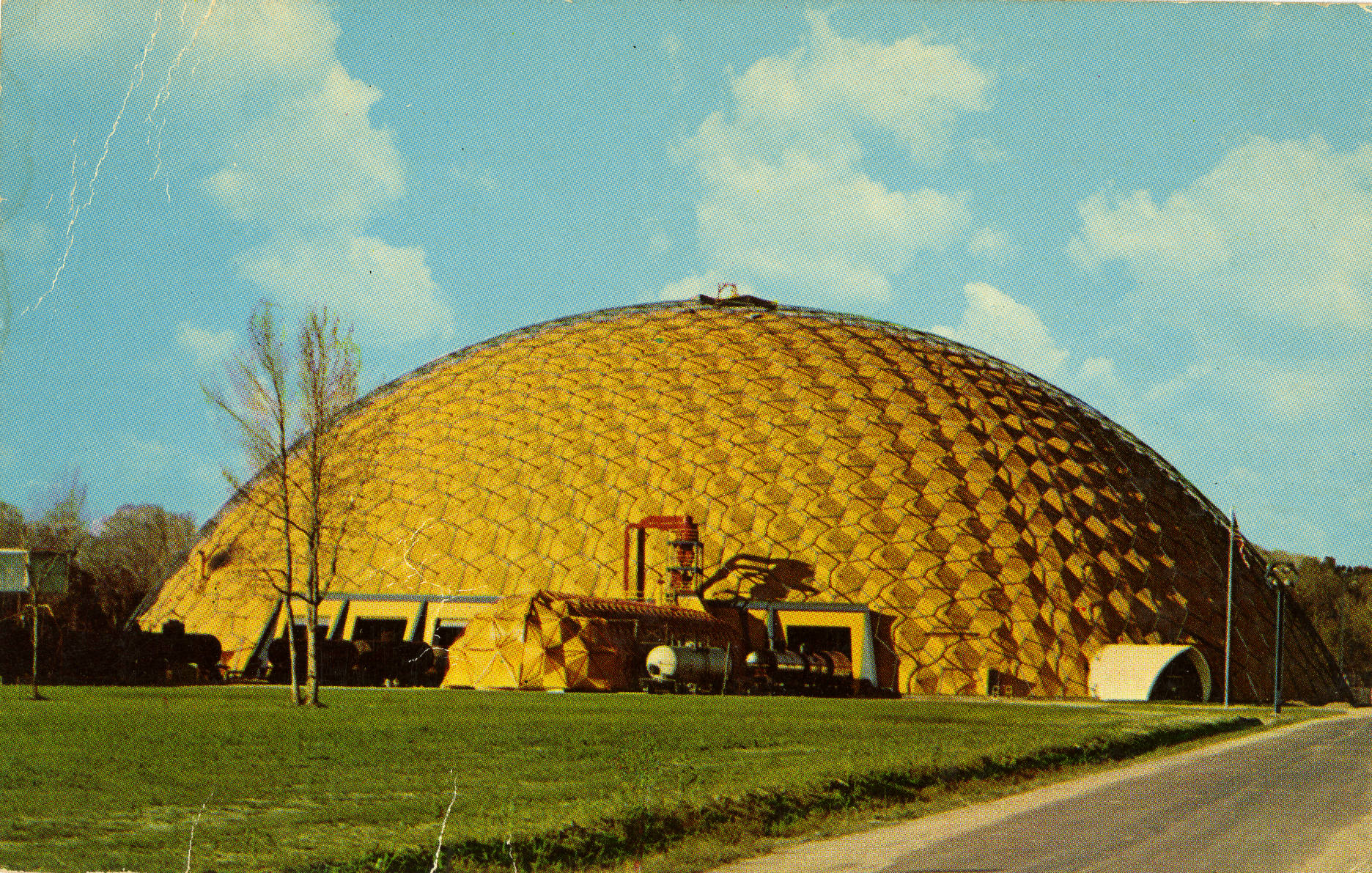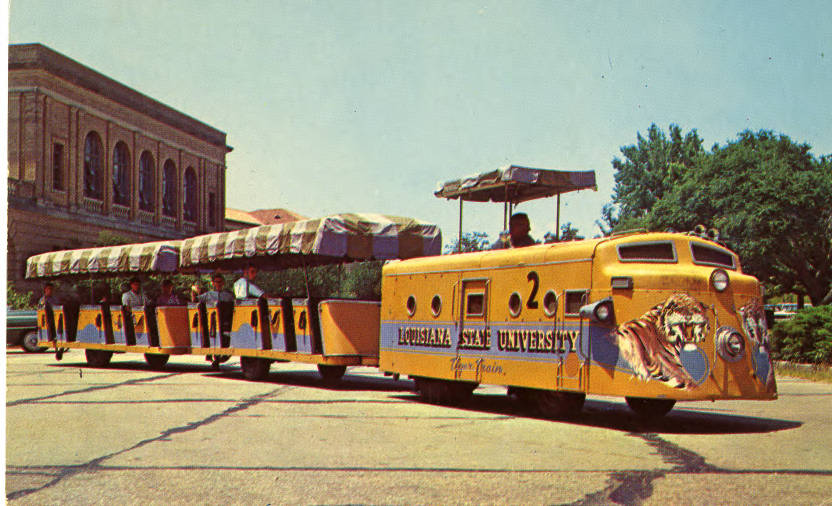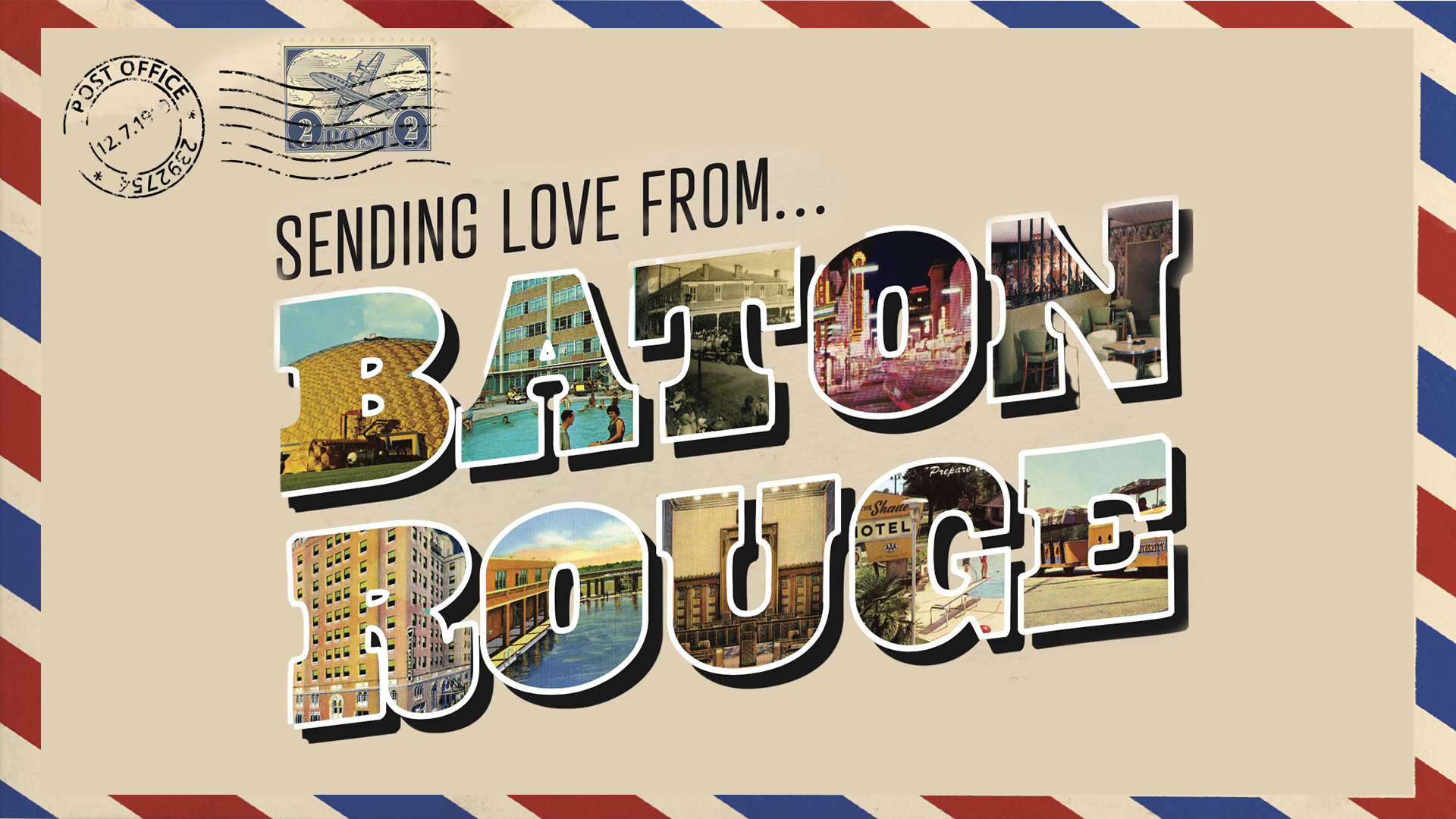
Rare images from Baton Rouge’s past, plucked from the library’s postcard collection
We’re spoiled when it comes to communication these days. With a few taps, we can chat with long-distance friends and family. At all hours, notifications chime the instant someone is trying to get in touch via text, call, DM or email.
In the era before cell phones and high-speed internet, most relied on the good ole U.S. Postal Service to transmit greetings to their intended recipients. While snail mail took time to travel, postcards became an easy way to send a short update or to inform others of one’s whereabouts—or just let someone know you were thinking of them.
Though postcard popularity has dipped, many still dabble in deltiology, or postcard collecting. We combed through the East Baton Rouge Parish Library’s digital collection of over 200 historic postcards. The large lot comes from donors, collectors, estate sales, antique shops and eBay. The images we found tell a bit about Baton Rouge’s rich history as a destination town. Here are our favorites.
|
|
Step right up!
One of the rarest cards in the library’s collection is this slightly blurry, black-and-white 1909 photo of the Hagenbeck-Wallace Circus. The image depicts the circus workers unloading at the train station, which is now the Louisiana Art & Science Museum, before heading to open greenspace east of downtown.
Catch of the day
Tailgating, gathering and letting the good times roll—that’s “how we do things” in Baton Rouge today. Well, it seems residents did things a little differently back in 1910, as shown in this wacky postcard of four men reeling in a massive game fish.
Old and new
Take a gander at this before and after comparison of Louisiana’s State Capitol buildings. The original castle-like building was completed in 1850 and renovated by 1882 to include its grand spiral staircase and multicolored, stained-glass dome. The towering, modern version was constructed in the early 1930s at a separate downtown site. At 450 feet, it still stands as the tallest state capitol in the country.
Take a dip
When it was completed in 1932, the Huey P. Long Fieldhouse’s long outdoor pool was the largest of its kind in the country. In its prime, it was used for water pageants and swim lessons. The once-opulent Fieldhouse, known for lavish amenities like its grand ballroom and soda fountain, became less grand as newer buildings were added to campus. Eventually, its massive pool was abandoned. During the building’s recent $33 million renovation, the pool was transformed into green space.
Dazzling downtown
Downtown Baton Rouge was once an even more thriving part of the community than today, as evidenced by this Third Street photo showing the district illuminated during its glory days of the 1950s and 1960s. Bright street lights and glowing neon signs point patrons to a multitude of operating businesses.
Enjoy your stay
Before it was the Hilton Baton Rouge Capitol Center, this downtown hotel was home to two previous iterations for vacationers and out-of-towners alike. First was the Heidelberg Hotel, constructed in 1927 with three restaurants, a cocktail lounge and space for conventions and banquets. In the 1950s, the Capitol House Hotel was added to the space, with more modern rooms and other amenities including TVs, telephones and a rooftop pool.
Super dome
Don’t be fooled by the futuristic aesthetic of this structure—it was actually completed in 1958. The Union Tank Car Dome, a geodesic structure constructed with little internal support, was used to repair and repaint tank cars. At the time of its completion, it was the largest, clear-span structure in the world. It eventually was demolished in 2007.
All aboard!
Drive through campus today, and you may have the unfortunate issue of getting stuck behind a massive Tiger Trails bus, shuttling students to lecture halls or off-campus housing. Before the big buses, there was the Tiger Train, a quirky yellow, multicar vehicle that debuted in the 1960s. The train was even given a “christening” via water-filled oil cans when it arrived on campus. It was intended to jet students to faraway spots while also alleviating car traffic on campus.
This article was originally published in the November 2024 issue of 225 Magazine.
|
|
|

